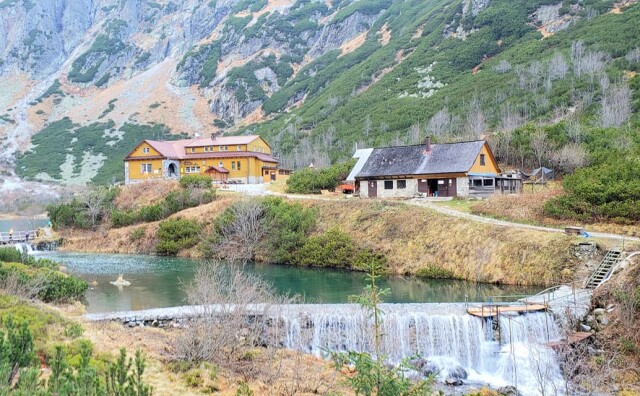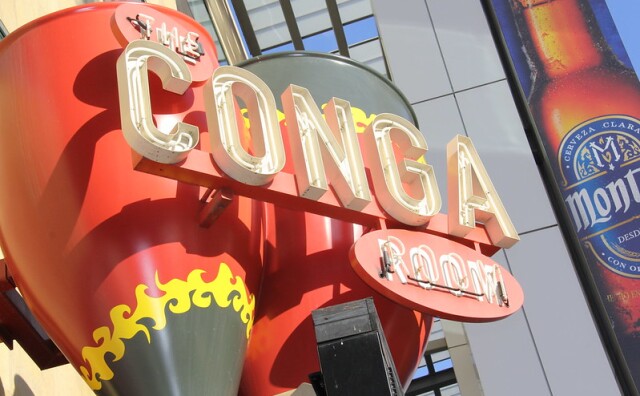Cesar Rivas’s life is kind of like a movie. When he was a kid in the early ‘80s, he escaped a war-torn El Salvador and found a home in Los Angeles. He soon discovered hip-hop and eventually helped form a local legendary dance team called Air Force Crew.
You know those dance crews that do a million and a half consecutive head spins? We can thank Air Force Crew for that. And if you’ve seen early West Coast breakdancing battle videos from the ‘90s, chances are they were put together by Rivas and his crew.
-
Binge the entire season of K-Pop Dreaming, the podcast that explores the rise of K-pop from the perspective of Los Angeles.
Going by the name Lil Cesar, Rivas and his dance crew are actually credited in pioneering these air moves — now called power moves — in b-boying. In layman’s terms, these moves feature dancers twirling their bodies on the ground without using their feet as an anchor.
Somewhere along Lil Cesar’s journey though, he became a pretty big deal in South Korea, and even got recognized at the national level.
“We were just a group of kids hungry for this new dance,” he said.
A 'Mecca of hip hop' in MacArthur Park
When Air Force Crew formed in 1984, they frequented a youth center in MacArthur Park called Radiotron. Rivas calls the center a “Mecca of hip-hop.” And that’s no understatement.
Influential rappers came to the center such as Ice T and Kurtis Blow. There was even a documentary and a couple fictional movies that used the space as a backdrop.
“All those dudes you see in the Michael Jackson video Thriller [were] from Radio[tron]. He came to the Radio specifically to recruit them,” West Coast DJ Chris “The Glove” Taylor wrote in a 2018 blog post.
And Radiotron founder Carmelo Alvarez remembers meeting Rivas when he was just a kid, and seeing him put together the initial foundations of power moves.
“He would do half a headspin, then fall down. Then he would do a headspin, then fall down. He would do two headspins, then fall down. He became the kid who would do the most headspins,” Alvarez told LA Weekly in 2013.
Why the '80s breakdancing scene was tough

Rivas recounts that in the mid-1980s, the economic and social circumstances in Los Angeles made it difficult for the breakdancing scene.
The landlord of the historic Radiotron location ended up selling the property, and mainstream news reports listed this type of dance as hazardous and a fad.
“You'll start breaking, and then all of a sudden you have a circle of people watching you. So police officers didn't like that, so we used to get tickets if you were dancing in the streets,” Rivas said.
At the same time that young lockers were reaching graduation age, readily available jobs became more scarce. Manufacturing companies like Goodyear, Firestone, and General Motors moved out of areas like South Central, and other low-paying jobs entered.
A shift in hip-hop
Hip-hop shifted to more socially conscious lyrics about street hustlers and gang life. And Rivas says he saw kids his age leave dance to become drug dealers and gangsters. He soon took a hiatus from dancing too.
“One of my closest friends just lost his leg … and that was very impactful for me,” he said. “This is not what I want to do.”
But by the early ‘90s, Rivas, inspired by the new flock of dancers, helped bring Radiotron back to its former glory; however, it was no longer a single location, but a traveling dance competition for both new and old school dance generations.
And Rivas’s heavy promotion of the competition eventually caught the eye of a big Korean music artist.
An unexpected guest

Korean American producer Jae Chong is a pioneer in the sound of K-pop. In 1995, his group Solid released its breakthrough album The Magic of 8 Ball. By the following year, the group was in Los Angeles, readying up for a sold out stadium show in Korea.
Before Chong was in Solid, he was involved in L.A.’s underground hip-hop scene. And he was a locker himself in a group called the Freaks of Nature.
In 1996, after catching Air Force Crew at a dance rehearsal in Echo Park, Chong invited the dance team to be Solid’s guest dancers during the stadium show.
“He was a very modest, humble person,” says Rivas. “So, I didn't know how big [Solid] were until we got to Korea and we were like, oh my God, these guys. There, these guys are, they're like, they're almost like a Michael Jackson status celebrity.”
And on the night of the show:
“We were backstage and the music started, and you see all the lights, and then you hear the sound of the crowd and the anticipation of them wanting to [see] Solid come out,” Rivas said. “I think it just shocked our equilibrium when we came out.”
Koreans saw for the first time ever somebody doing infinite headspins.
Chong remembers the impact the Air Force Crew brought to their show.
“So we actually displayed the first b-boy show in Korea in full effect … Koreans saw for the first time ever somebody doing infinite headspins,” Chong said. “I spoke with a prominent b-boy crew in Korea, and the leader said he started breakdancing because he saw them at the concert.”
At the time, U.S. influence seeped into Korean consciousness through the Armed Forces Korea Network and through nightclubs in Itaewon that were often frequented by Black GIs. These were the underground spaces where b-boying and hip-hop were relegated to before early K-pop acts like Seo Taiji and Boys and H.O.T. incorporated the genre in their songs.
How that impact continues
In 2007, more than a decade after the Solid concert, Rivas was invited back to Korea to be honored at a new state-sponsored b-boy competition called R-16.
R-16’s founder John Jay Chon, who’s recognized as a pioneer in Seoul’s breakdancing scene, remembers watching and distributing a Radiotron VHS tape to a hip-hop dance crew in Seoul back in 1997.
"A year later I came back and I just saw there were more b-boys. They were telling me, 'Oh you gotta see this footage,'" Chon told Salon in 2008. "I'm watching it and it's the Radiotron [video] that I brought out a year ago.
Rivas says that kids at R-16 went up to him at the event and thanked him for introducing b-boying to them. He argues that his crew has had a role in how big the Korean b-boy scene is now.
There were no barriers. It didn’t matter the color, it didn’t matter the skin. But what really mattered is that we all wanted to do one thing, and that was the joy of dance.
In 2024, b-boying is set to make its debut on the Olympic stage in France. And Rivas believes Korea’s national team is a tough one to beat.
“Korea is one of the top five … Solid [and] Air Force Crew made an impact in the scene in 1996 when only a handful of people were dancing,” Rivas said.
Till this day, Rivas still has his guest pass from the Solid concert. There’s an 8-ball on it, and it reads “the number eight represents new beginnings.”
He thinks back fondly of the times where he brought dance back to his city.
“There were no barriers. It didn’t matter the color, it didn’t matter the skin. But what really mattered is that we all wanted to do one thing, and that was the joy of dance.”
-
Listen to all of LAist Studios’ new podcast, K-Pop Dreaming. Host Vivian Yoon follows the rise of K-pop through the perspective of the Korean American diaspora in Los Angeles.












